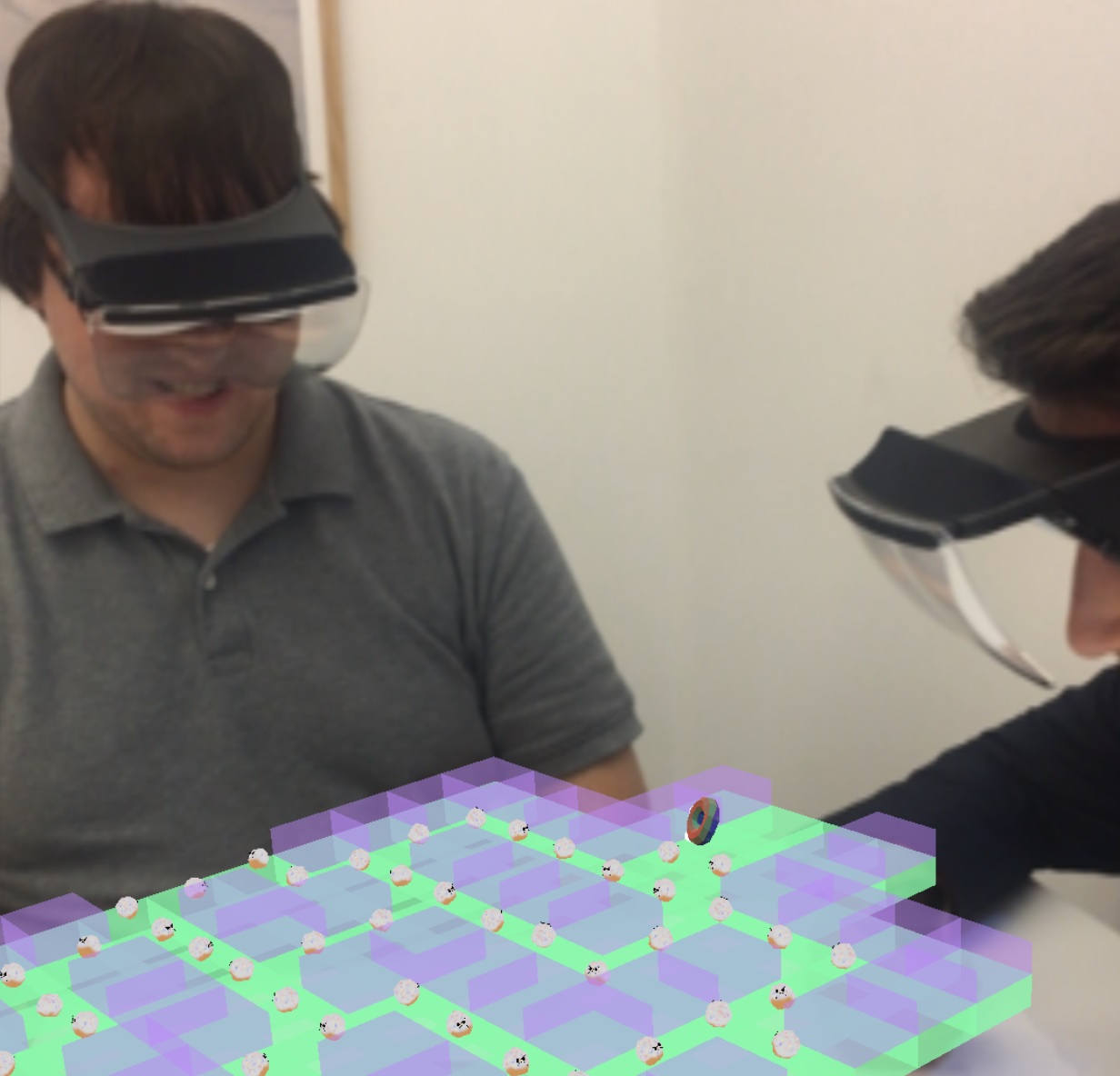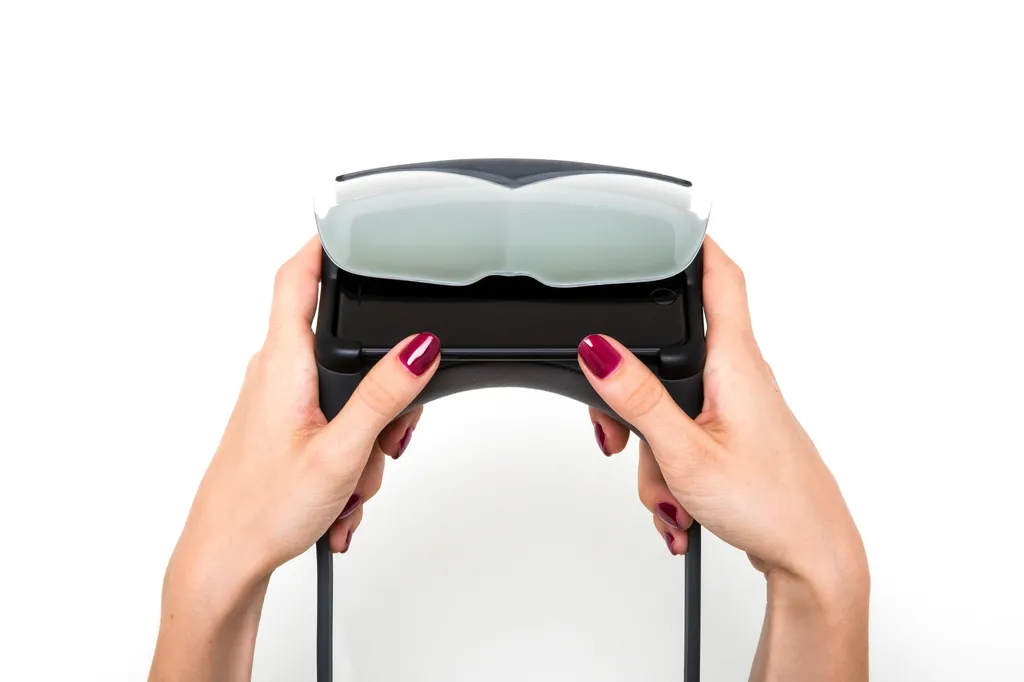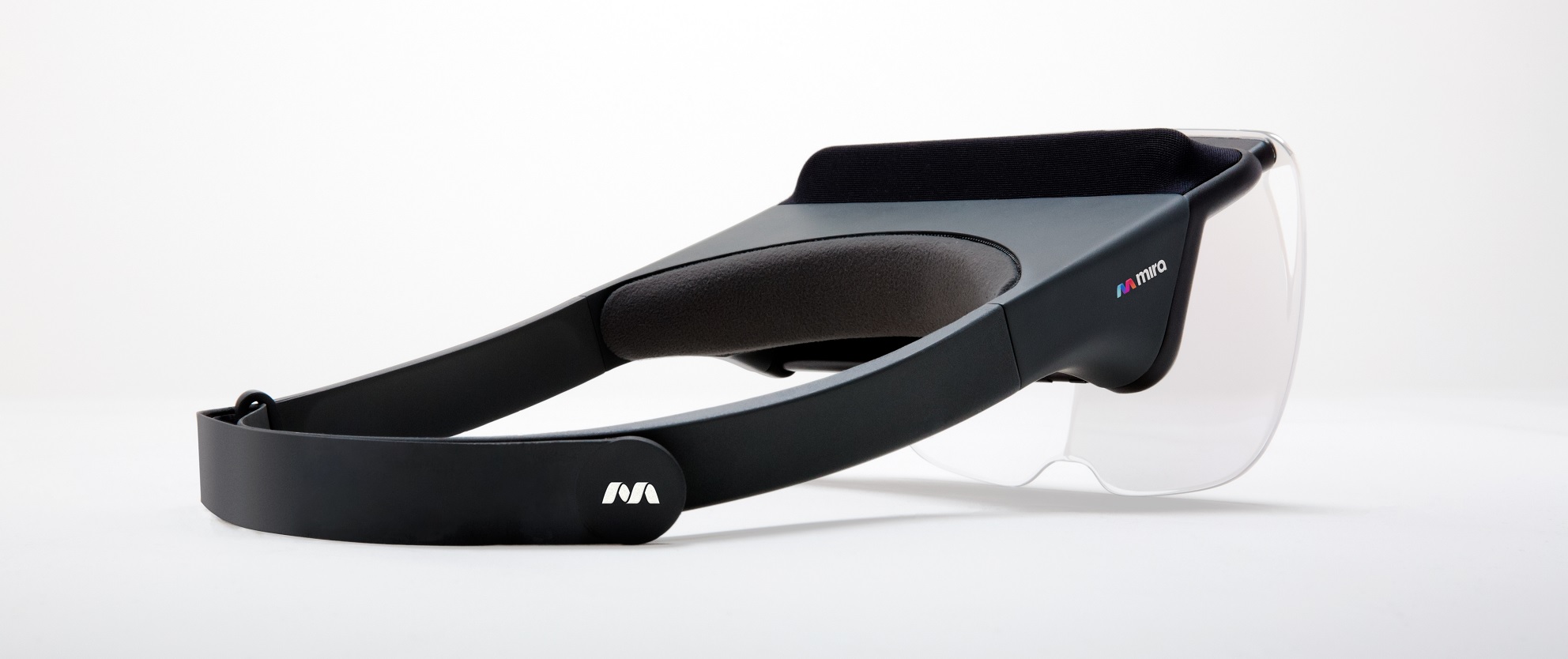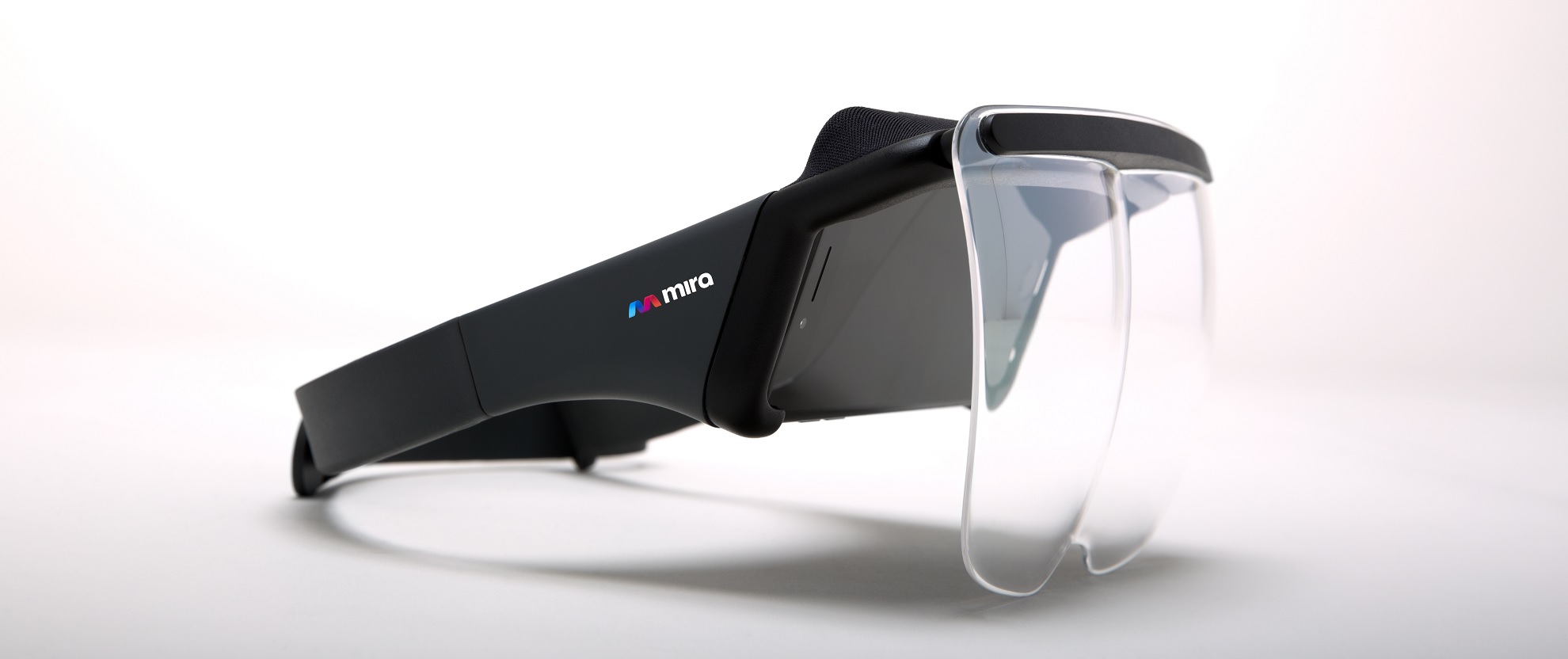When Ben Taft and Matt Stern, two of the co-founders of Mira, opened up the box of the Prism AR headset for me for the first time I’ll be honest: I wasn’t that impressed. Having tried the HoloLens and Meta 2 I’d seen what extremely expensive AR devices were capable of (again: not that impressed personally) so I wasn’t going to hold my breath for this relatively cheap looking pair of lenses attached to a glorified visor. But after trying them out for myself I’ve gotta say I changed my mind.
The Prism AR headset, from new company Mira, is lightweight, cheap, and surprisingly effective. All you do is clip your smartphone into the device’s holder, the screen reflects images onto the lenses in front of your face, and then you can easily see and interact with everything right there in front of you. It helps that the field of view is surprisingly large when compared to the likes of the postage-stamp sized view in the Microsoft HoloLens.
In addition to announcing the device today, Mira is announcing $1.5 million in seed funding from Sequoia Capital, Troy Capital Partners, S-Cubed Capital, Salesforce CEO Marc Benioff, global will.i.am, Jaunt VR founder Jens Christensen, and more.
Instead of relying on hand-based gesture controls every Prism will come with a controller you hold in your hand similar to the Samsung Gear VR or Google Daydream controller. The design principles, style, color, and controller aren’t the only things that reminded me of the Daydream though — the co-founders themselves are pretty honest about the inspiration.
Whereas the HoloLens, Meta, and other contemporary AR devices are aiming at a high-end market with only devkits right now, the Prism is launching a single device with a controller that’s all powered wirelessly by your smartphone for just $99. Since the phone powers everything no separate devkit is even required.
“As developers, we wanted a way to build and experiment in AR without the need for expensive equipment, and as AR enthusiasts, we wanted the opportunity to play and explore without limits. We challenged ourselves to build a mobile headset that would make AR accessible to anyone,” said Taft, co-founder and CEO of Mira, in a prepared statement. “Prism is a bridge between the physical and digital worlds and Mira is creating the thread that lets people connect and share experiences.”
Taft and Stern explained to me that the core inspiration behind the Prism was a desire to get people’s gaze off of their phones and back to the world around them. After deleting social media off of his phone completely, Taft realized how freeing it felt. Now with Prism, the two realities are able to merge together seamlessly.
Obviously this evokes a similar promise that we’ve heard time and time again with AR technology and frankly we aren’t there yet, but the low cost and ease-of-use the Prism represents is certainly a step in the right direction.
For my hands-on time with the device they walked me through the setup process that involved calibrating the controller and getting used to wearing a 360-degree set of AR lenses. They sat around my head comfortably and hung in front of my eyes. There was plenty of room to keep my standard everyday glasses on still.

The two main demos I tried involved spinning around in circles while shooting aliens, similar to Face Raiders on the Nintendo 3DS, and guiding a rolling doughnut through a maze reminiscent of Pac-Man. For the latter demo Stern actually put on a second Prism headset and joined in through wireless networking. We were able to both look down and see the same maze on the table using the AR card marker, shown above. The image you see was taken using Mira’s “Spectator Mode” which allows anyone with an iOS device or iPad to watch the experience happening in real-time.
The Mira Prism is far from being the most advanced device on the market, but it’s not trying to be. With a goal of fulfilling the role of being the Google Daydream of AR, there are a lot of hurdles left to cross still.
When it launches there will be a handful of apps available, but most of the responsibility falls in the laps of intrepid developers to make content for the device or add AR modes onto existing mobile apps. Software sells hardware so a compelling reason to own one of these has yet to really arise other than the novelty factor alone.
The Prism is a big move for AR’s step towards mass adoption. If you’re interested in learning more you can visit the official website to learn more and pre-order yours for $99. Devices will ship to developers this fall with consumer units should start arriving before the end of the year. At launch the device will be iOS only with Android support coming later.





























